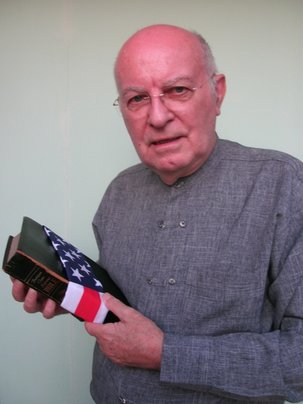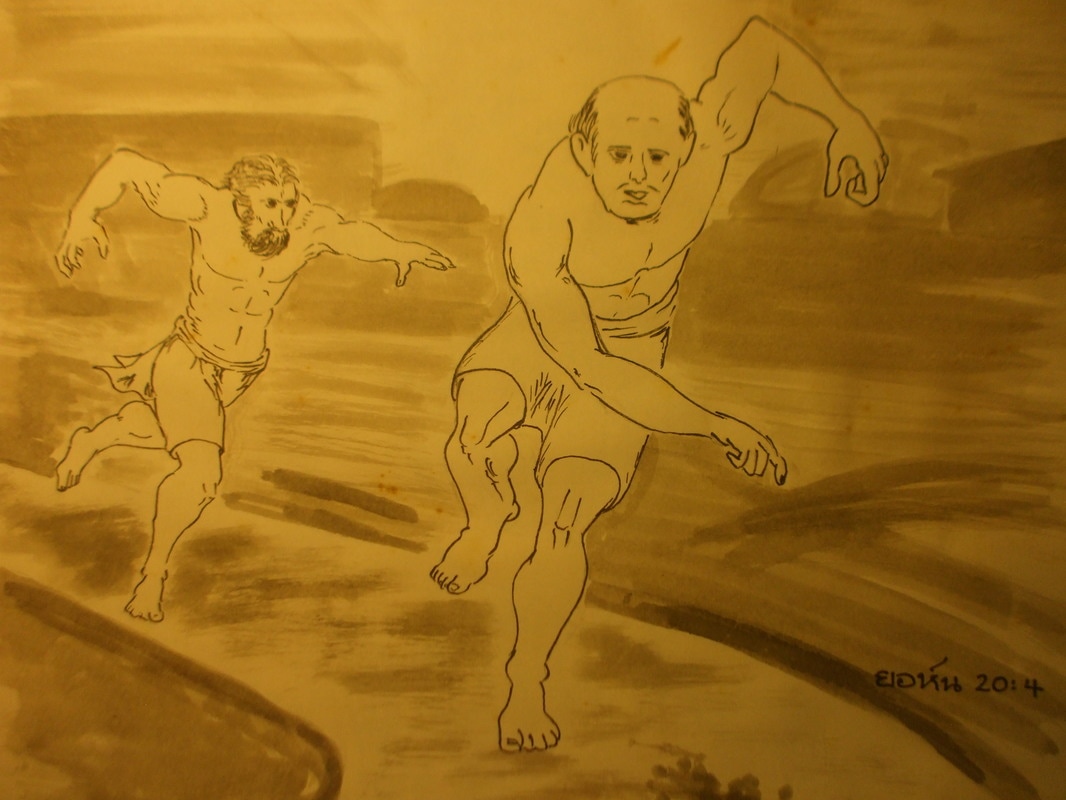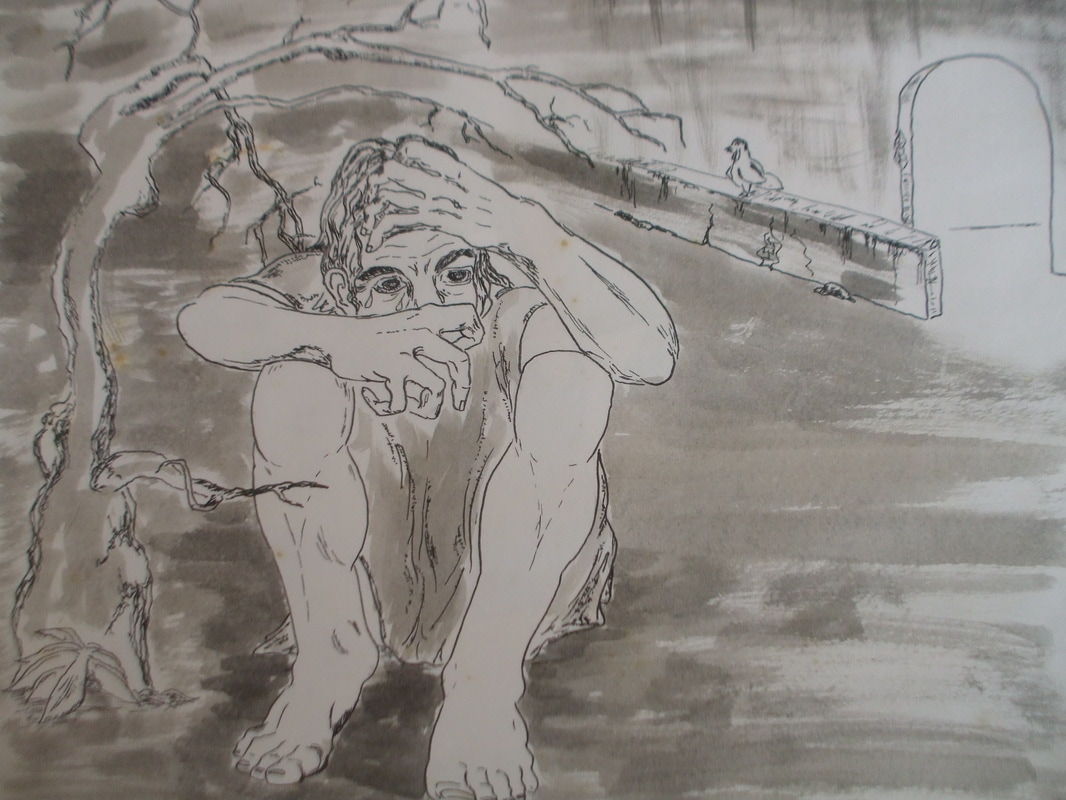|
American civil religion is now generally recognized as a variety of faith. It has been expounded in academic tomes and enshrined in national monuments. The term “civil religion” entered the lexicon based on a 1967 article by Robert Bellah of Harvard. It came into widespread use during the 1976 US Bicentennial celebrations, but is standard today.
Bellah's definition of American civil religion is that it is "an institutionalized collection of sacred beliefs about the American nation," which he sees symbolically expressed in America's founding documents and presidential inaugural addresses. It includes a belief in the existence of a transcendent being called "God," an idea that the American nation is subject to God's laws, and an assurance that God will guide and protect the United States. [quoted from the Encyclopedia of Religion and Society article on “Civil Religion”] In brief, American Civil Religion is an aggregation of narratives and expressions about the USA as a religious nation. Those expressions include various celebrations, symbols and monuments that show how the country reflects its divinely mandated mission and destiny. The purpose of these symbols, Christine Serva reminds us, is national unity: the symbols are “the elements of cultural and political life that connect to a higher purpose and meaning, often bonding the people of a nation together.” At the epitome of these manifestations is the supreme dedication shown by persons in the armed services; military monuments and memorials are most revered semi-sacred symbols of American Civil Religion. What is not so well understood, and is therefore controversial and divisive, is the fact that American civil religion is often exclusionary. Here are some examples:
It is being suggested, now, that American Civil Religion is being eclipsed by cynicism about all things religious and that the high purposes of American Civil Religion are being ignored. Whereas, in the past, there were prophets to keep reminding us that “without an awareness that our nation stands under higher judgment, the tradition of the civil religion would be dangerous indeed,” (to use Bellah’s later warning at the time of the US Bicentennial), the prophets are ominously missing. In the past, America stood for “service and sacrifice” and America was a leader bringing nations of the world into greatness to stand beside us. Recent political expression uses degraded rhetoric with an emphasis on separation, division, hate, partisanship and the absence of higher authority (although there is the assumption of blessing, without any compensating assumption of accountability). Furthermore, as American Civil Religion’s loftiness has seemed to be surrendered to political expediency, it is being abandoned and doubted by those who abhor the drift toward confrontation, increased religious hatred and rivalry, and radical motivation to violence. Rather than unity, division is expanding. Nevertheless, altered and diminished as it may be, American Civil Religion persists and exerts a still powerful pull. We will probably wrap a flag around the Bible on July 4. We are still urged to put our hands over our hearts when we sing the National Anthem and pledge allegiance to the flag … one nation, under God …. And our authenticity as American citizens is doubted if we do not do these things.
2 Comments
Songkran is the only religious celebration in Thailand set by the solar calendar. It is always April 13-15. A Chiang Mai city resident might almost be forgiven for thinking Songkran is all about a big water fight. Thailand’s tourism promotion officials encourage that. But outside of town where we live there is more to it.
This week’s blog is a photo essay showing “The Other Songkran.” April 15 began with a trip to the temple. We had all contributed a small amount of money to buy a load of sand to simulate a mountain inside the temple compound. In older times people brought the sand in person. Households took turns inserting paper banners called toongsymbolizing ascent to the top of the world mountain, a step below where ancestors (hopefully) reside unless they have become reincarnated. [See pictures 1-2 above] Inside the assembly hall, first we distributed flowers, candles, popped rice and small coins onto trays. They are called ขันแก้วทั้งสาม in honor of the Triple Gems: Buddha, Dharma, and Sangha (priesthood). [picture 3] Then we took turns presenting sacks of goods to one of the temple monks, in the name of various ancestors. The sacks contained a variety of daily necessities, but normally were things to eat or to use to keep clean – Songkran is much about bathing and cleaning up. The priest intoned a traditional blessing and then poured little bottles or cups of water into a bucket, which is another traditional blessing ritual. [pictures 4-6] A mid-morning service included chanting followed by bathing the Buddha images. [Sorry, no pictures came out]. During the day people brought “props” called ไม้คำ to be placed around the temple’s bo tree. The purpose is to symbolically hold up the venerable tree, a descendant of the one under which the Lord Buddha sat to be enlightened. Nearly every village also prepared a large prop as a community project to be delivered at night with a lot of revelry. [pictures 7-9] Meanwhile, we visited the surviving family elders. Here in the north the tradition is for younger family members and protégés to call on the elders and bring them sacks of goods, identical to those taken to the temple, but including a cup of scented water. The water is to provide a ritual bath, although it consists of pouring a few drops onto the hands of the elders which they swish onto their heads. The elders then usually tie white cotton cords around one or both wrists of the younger people while intoning a blessing. This rote naam dam hua ceremony may happen a few days after Songkran if the younger people come from a distance. [pictures 10-12] During the late afternoon the older people in the village gathered at the village pavilion to be honored with a group blessing. [picture 13] The young people had organized it, and it included water being poured over the old people’s hands, although it got a little more rambunctious at the end. Songkran ended for our village, the next day, with the dedication of a thammat. The thammat is used for delivering sermons, and so it is usually called a pulpit, although it is a chair since priests preach or chant prepared sermons while sitting. We needed a new thammat for village ceremonies, especially funerals, outside the temple. The old one collapsed under the last priest who sat on it. The village head oversaw the collection for the new thammat, and it was initiated with a ceremony in the village assembly pavilion. Of course, the ceremony ended with all in attendance getting sprinkled with “holy water”. [pictures 14-16] At our house the gathering of family and gay Ban Den Friends was the highlight of the long weekend. We ate for a couple of hours and then got around to a rote-naam-dam-hua ceremony.[pictures 17-18] Note: here are links to a previous essay: www.kendobson.asia/blog/two-songkrans When the women disciples of Jesus told the men that the tomb was empty where Jesus had been interred, two of the men took off running. The Gospel of John (chapter 20) says that one of the men was Peter, and the other was “the one whom Jesus loved” [a modest euphemism, used by the disciples of John to refer to John]. The account says that Peter was in the lead but John ran faster. [The picture above is my rendition from 20 years ago of the disciples running]. They found the empty tomb, but noticed that the grave-cloths in which Jesus body had been wrapped were … notice this, as the men did … they were “deflated”. They were not scattered around as if grave robbers had invaded the tomb; and the cloths were there – which they would not have been if the body had been moved to another grave as the women first thought. But the head-cloth was rolled separately, as it would have been when it was wound around Jesus’ head. Jesus was gone leaving the death-wrappings behind. Then the men “believed”.
What did they believe? They believed the evidence before their eyes ... an empty tomb and cloth lying just where it had been. “They did not yet know the scriptural prophecy that Jesus would be raised from the dead,” the Gospel of John carefully informs us. In other words, that fuller understanding came from adding the visual evidence to the scriptural testimony. Easter Day included several other visual experiences by various disciples. John’s Gospel recalls that Mary Magdalene actually saw the risen Lord, mistaking him for a gardener at first. Then the Lord showed up inside the locked room where the disciples were hiding. All these sightings were somewhat ambiguous until they had been filtered through the lens of scripture. They were random experiences, fraught with emotion, but with imprecise meaning until they had been subjected to study and reflection. Before that there was running, rumors and sightings. That’s the way faith works. At last, stalwart Peter wept bitterly.
We all do. We all fail to live up to the performance standards we vowed we would and then we see someone we love hurting as we dissolve into pathetic shame. For the time being everything is devastated. We sink into a hole of despair. Meanwhile, consequences and events plunge on relentlessly without us. We have been rendered irrelevant. All we can do is stand aside. If there is to be a future involving us, its circumstances are going to be radically different. One part of our ruin is our lack of imagination. Our vision of reality leading onward has gotten hold of us, but now this collapse of conditions – in which we played a duplicitous part – has rendered that unimaginable. Nothing going onward has meaning. Only agony is real. Memory is an enemy at a time like this. One by one, images march through our minds, stripped of the gaudy splendor with which we once bedecked them. Now they mock us for how we squandered those precious opportunities. They tramp unbidden but unpreventable in review, and taunt us. Endurance is coincidental. If it happens that we survive it may only be because we were distracted from intention to defy survival. Horror haunts us in fragments, so have no focus, and so we drift, perchance. The universe coalesces our horror. We are betrayed by agencies we never should have trusted, and then heaven turns black and the earth heaves … and silence reigns for a moment as strangers rush to bury the past. Good grief on Friday is all about weeping. Save your platitudes. There is no silver lining to the clouds on Good Friday. Enchanted Astorwold is a collection of stories I wrote to keep young readers reading after they had finished JK Rowling’s Harry Potter series. The stories I wrote assume that readers are growing more sophisticated but still able to suspend their disbelief in the power of magic. But what is magic? How can a magical world co-exist with a non-magical world? What happened to the new generation of students who got coveted letters announcing they had been accepted into the world’s best known school of witchcraft and wizardry? What is the Ministry of Magic up to now that the world knows all about the parallel realm of magic (with 600,000,000 copies of Harry Potter books sold in English alone)?
Astorwold is a farm in Suffolk about 60 miles north of London. It is a secluded magical place, where a lot of the products are grown that are sold in Diagon Alley. But Dame Agatha Astor has no magical heir until she discovers young, homeless Robin Astor Havorford, a reluctant student of Professor Virgil Verbal of Hogwarts, a neighbor of Dame Agatha’s. Magic carpets, wands of solid wood with no inserted animal parts, and powerful venom from the deadly Ghanaian Green are but three of the things being developed by Astorwold’s gnomes, giant, and Moroccan illegal immigrants that might help save magical England and the whole of Europe from The Empire being built on the seabed of the North Sea. These stories began as resources for workshops for English teachers in Thailand to build supplementary classroom activities. The first stories raised the question, how would a progressive teacher, with all the resources of Hogwarts, teach students to find enchantment in the wider world and in literature? Once inspired, what will the graduates do that has never been done before? My son, Andrew Dobson, converted the book text into a pair of e-books. Many of the illustrations are his work as well. You are invited to download the format you prefer to view [single page or side-by-side double page]: http://www.fingerpaintdesign.com/enchanted_astorwold_by_kenneth_dobson_singlepageview.pdf http://www.fingerpaintdesign.com/enchanted_astorwold_by_kenneth_dobson.pdf |
AuthorRev. Dr. Kenneth Dobson posts his weekly reflections on this blog. Archives
March 2024
Categories |
| Ken Dobson's Queer Ruminations from Thailand |
|



 RSS Feed
RSS Feed
